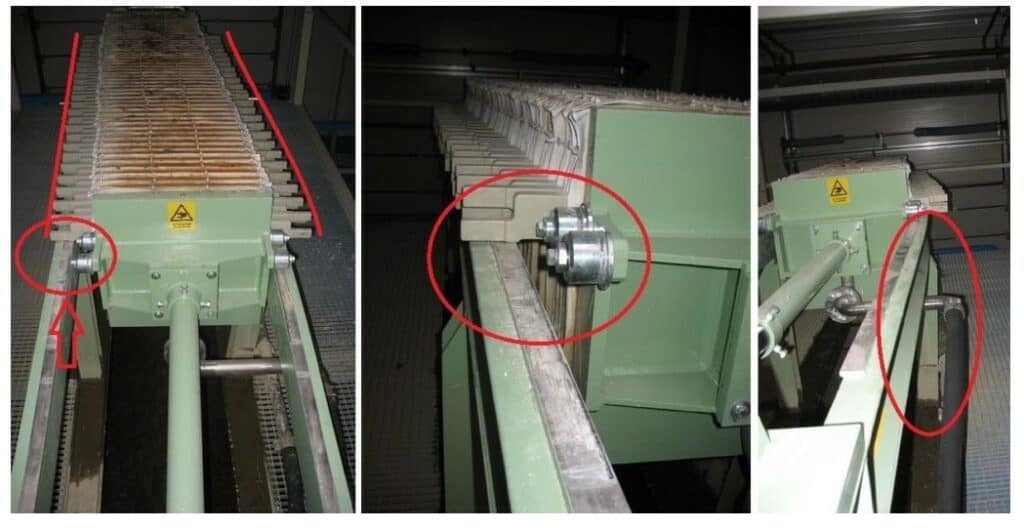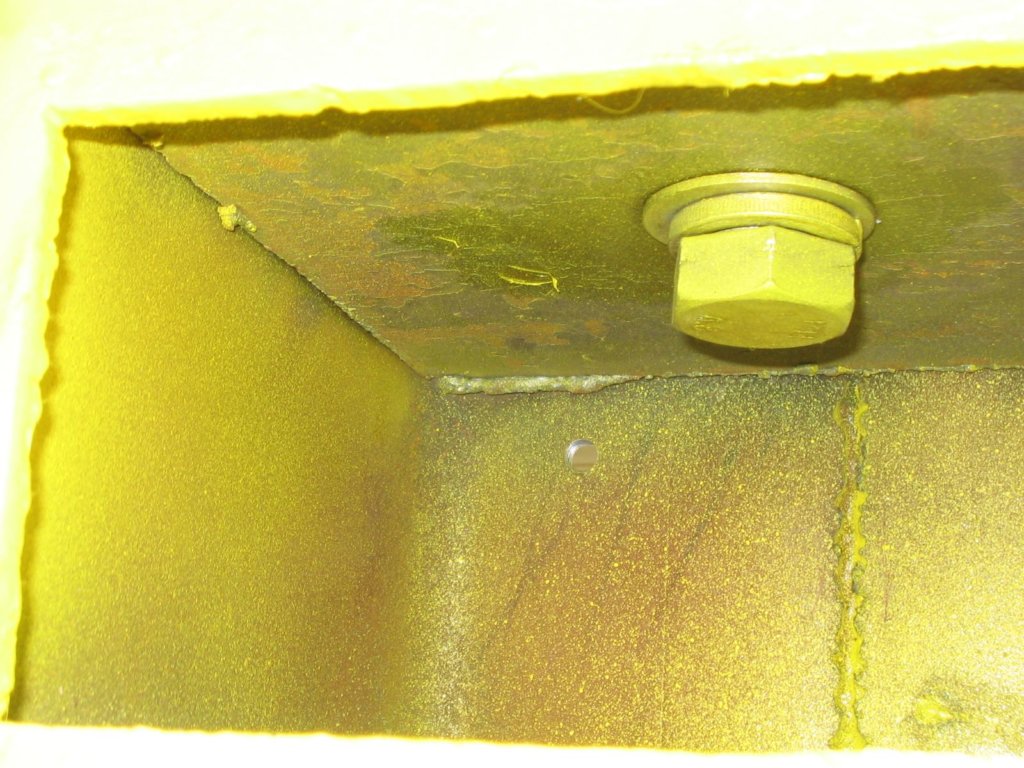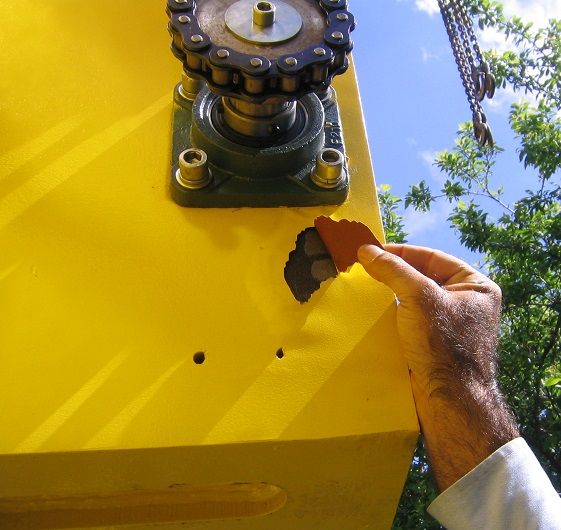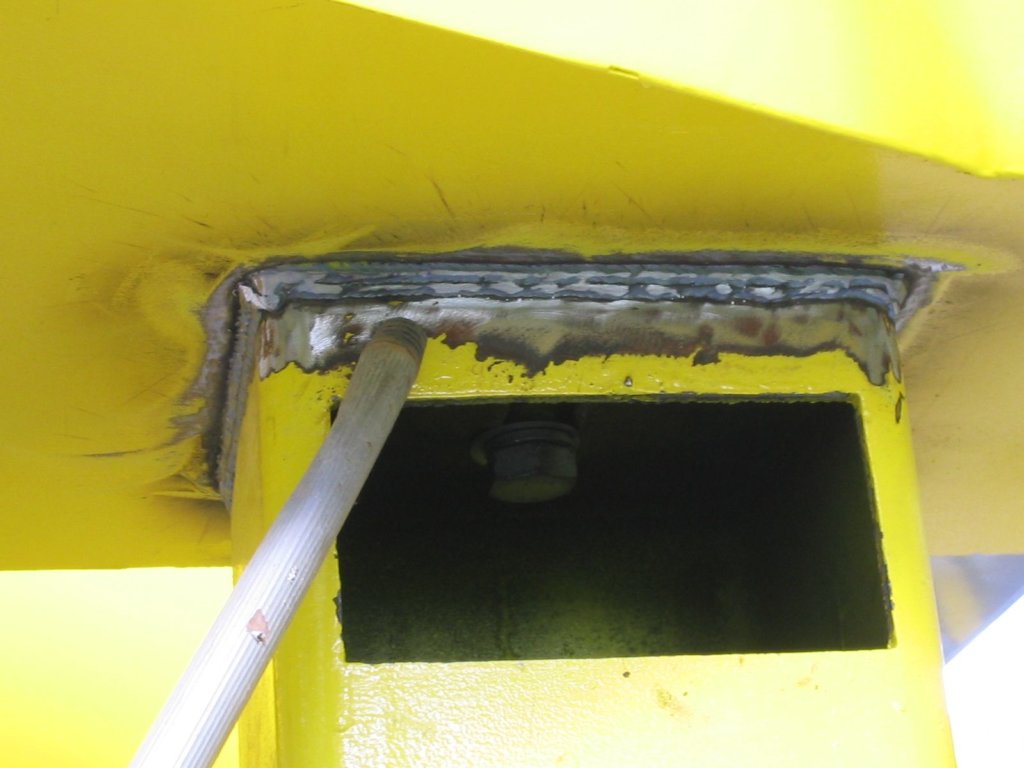In this article we quickly review what are the main factors you need to pay attention to when purchasing and/or installing a plate filter press in your company or in your production/disposal site.
There are certain factors to take into consideration, whether you decide to buy a new machine or a used or imported machine
One of the things you need to pay more attention to when installing a sludge filter press, or rather in the study and estimating phase, is the length of the machine.
Apart from the cases in which there are huge flow rates involved and therefore you are forced to choose long machines due to a physiological limit of the size of the plates (and therefore to respect the volume you need it is necessary to put many plates) it is always better – if possible – opt for short machine.
The length of the filterpress impacts on two factors, one linked to the filling of the filter press and the other linked to the structural strength of the frame.
A long machine is more difficult to fill, without a doubt.
In particular, when you exceed 40/50 filter plates, it should be mandatory to have double feeding system, i.e., feed the filter press from both the fixed head and the mobile head.
In any case, a very long plate pack is more difficult to feed and this is understandable.
In particular, it is necessary to pay attention that zones of different distribution of pressures do not form inside the pack
In fact, the fixed head is certainly fed first, while now that I have to go through the entire volume, I need to be sure of correct filling, especially if I have sludge that tends to drain easily.
In these situations, the flooding valve and the double feeding should always be present, to avoid any danger of non-homogeneous pressure distribution which in some cases could also lead to plate breakage.
The second reason instead concerns a structural problem.
Long machines with a very long frame are understandably more susceptible to structural warping. The longitudinal members of the sludge press filter are in fact subjected to traction and the thrust of the cylinder must be centered with respect to the axis of symmetry of the machine.
For reasons that may depend on the functioning (excessive dirt that remains between one plate and another, lack of lubrication in the joint of the head, or even not perfect flatness of the plate pack) it is possible that the hydraulic cylinder pushes not in line with the centre line of the frame.
At this point, it may happen – especially with very long machines – that the longitudinal members of the filter bend!
It has happened more than once to see a machine with side members deformed to such an extent that it was no longer possible to use the filterpress.
In this condition, the machine cannot function – and restoring the side members is one of the most difficult interventions to carry out on site – with machine downtime that can last even months.
So ultimately, if you can choose, it is always better to have filterpresses that are not too long, for reasons of greater structural resistance, greater filling efficiency and also shorter duration of the filtration cycle.

One of the trends that for several years now has been recorded in more and more realities is to purchase and install plate filter presses from oriental markets such as China and India.
This action, which in itself has nothing wrong with it, must however be weighted considering some factors that can constitute problems during use.
First of all, the factors concerning voltages and frequency must be considered, not only of the main engines, but also of the auxiliaries.
In particular, precisely on the auxiliaries – for example the voltage of the pneumatic solenoid valves – one must be careful, because it has happened several times personally to readapt the auxiliaries as the voltages were not 24 Volts, as normally happens in Italy, but rather 240 Volts.
This means that with these voltages it is not possible to operate in Italy, due to the risk of electrocution.
Often the regulations and standards that exist in non-EU countries, as in this case, are not the same as we currently have.
Therefore, it may happen that the hydraulic unit mounts components that are not compatible with those that are commonly found, both for cartridge valves, hydraulic blocks, etc…
This means that in the unfortunate event that something gets damaged or needs to be replaced, I have to be sure I can find a compatible component near our area, otherwise I may have to be down for several weeks.
Still another thing, it is good to pay attention to the quality of the painting and welding.
In these cases, it is always good to request a certification of the painting, both as regards the sandblasting and as regards the thickness of all the layers of the painting, since sometimes there are surprises.
It is also advisable to always request the material certificates, at least for the machine frame.
The inadvisable thing to do is to import a sludge press filter that does not have these characteristics and try to adapt and transform it for the Italian or European market because – from direct experience – there are more problems and more costs than buying it directly in Italy.


